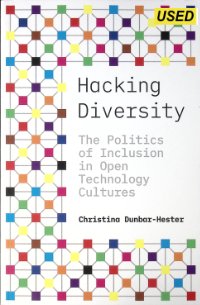By The New York City Department of Investigation
Each year, New York City issues tens of thousands of parking permits that allow the holders to park in locations around the City not available to those without permits.1 Permits are issued by the New York City Department of Transportation (“DOT”), the New York Police Department (“NYPD”), and the New York City Department of Education (“DOE”). In 2022, more than 95,000 permits were issued – over 26,000 by DOT, approximately 40,000 by NYPD, and over 30,000 by DOE. The vast majority of the City’s parking permits are issued to City employees for use while conducting City business. Some permits are issued to non-City employees, including employees of other government agencies, people with disabilities, and certain not-for-profit organizations. DOT, NYPD, and DOE issue parking permits to their own employees. DOT also issues permits to several dozen other agencies and members of the public; NYPD also issues permits to other law enforcement agencies. DOT’s permits issued to City agencies and staff, including DOT staff, allow parking in specified areas not available to the general public for limited periods of time while conducting City business. NYPD issues similar parking permits. DOT, NYPD, and DOE also issue parking permits for parking in certain on-street spaces that have been specifically designated for use by agency parking permit holders, typically near City office buildings, precincts, and schools. Permit abuse is a subject of long-standing concern in the City. Such abuse includes illegal parking while displaying a valid permit, use of permit “stand-ins” such as business cards or work vests, by individuals who may not have a valid permit, and the proliferation of fraudulent permits. There are limited designated spaces for City employees to park and the number of parking permits issued to City employees far exceeds such spaces. Illegal parking while displaying a valid permit is therefore common and can cause dangerous conditions and contribute to traffic congestion in already crowded streets. Illegal parking by permitted vehicles, seemingly without sanction, is widely documented on social media, drawing attention to a form of corruption that erodes the public trust in municipal government Past administrations have sought to address these problems, generally without success. In 2008, Mayor Michael Bloomberg reduced the number of parking permits issued to City employees, cutting by 20 percent the approximately 70,000 permits that the City estimated it had issued. While Mayor Bill de Blasio was required to issue 50,000 new permits to DOE employees as a result of an arbitration ruling, in 2017 he announced the implementation of new controls; stricter enforcement, including the creation of a dedicated NYPD enforcement unit; and harsher penalties in an effort to combat parking permit fraud and abuse. In 2019, he announced a plan to eliminate fake permits, involving the phase-out of physical placards and creation of an Integrated Parking Management System, including Pay-By-Plate parking meters. He announced a three strike policy to permanently revoke permits after three instances of misuse and a dedicated DOT placard abuse enforcement team. Many of these reforms did not materialize or have since been abandoned. The DOT enforcement unit was never created, and the NYPD unit was disbanded due to COVID-19 related budget cuts. Components of the Integrated Parking Management System were implemented and the deployment of Pay-By-Plate Meters was delayed and is slated to begin in April 2024. In December 2019, the New York City Council passed a package of legislation intended “to crack down on the improper use of City-issued parking permits, known as placards” and “to rein in misuse of placards.” Local Law 6 of 2020 was a part of that package and required that NYPD evaluate weekly, for a six-month period, at least 25 blocks or intersections that experienced a prevalence of improper use of parking permits and at least 25 blocks that experienced parking that obstructed street infrastructure, such as bicycle or bus lanes or fire hydrants. The law required NYPD to submit a monthly report to the New York City Department of Investigation
New york: New York City Department of Investigation, 2024. 47p.





















